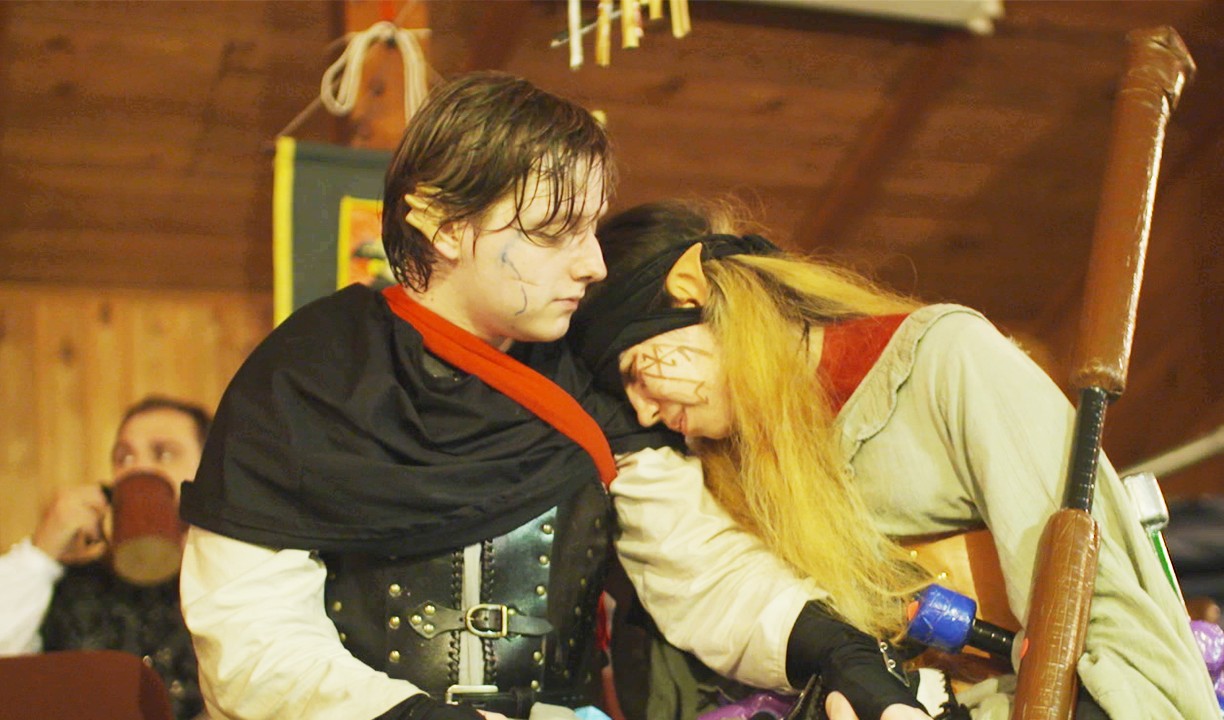The Forgotten Message of Monopoly
Illustration by Lia Kantrowitz
Scott Nearing, an economics professor at the University of Pennsylvania who moved to Arden in 1905, was one of the residents who played the game. Thinking it would be a great tool for teaching his students about the effects of rent gouging, Nearing made a copy by hand and began using it in his classes. He didn't know what the game's real name was so he called it the Anti-Landlord Game. His students decided Monopoly or Business would be a better name, but they liked the game all the same, and some of them made copies so that they could play it whenever they wanted.She argued that the game would enable children to "see clearly the gross injustice of our present land system" and grow into adults who would campaign against it.
Illustration by Lia Kantrowitz
Watch: LARPing Saved My Life:

After graduating in 1929 Layman returned home to Indianapolis and began playing the game with his friends there. Encouraged by the positive reaction, Layman persuaded a local battery manufacturer to publish his game, and in 1932 it went on sale as Finance.The differences between Finance and present-day Monopoly were largely cosmetic. There were no hotels but players could build up to five houses on their land. Instead of the Just Visiting space next to the prison there was a tax demand for 20 dollars. Go was called Start. But beyond that and a few optional advanced rules, Finance was just Monopoly without the graphic flair.The political dimension of the Landlord's Game was also missing. Finance's rules described the game as one that "parallels the transactions of modern business" and "gives everyone an opportunity to make a fortune."
Illustration by Lia Kantrowitz
Author Tristan Donovan. Photo by Katie Vandyck/courtesy of St. Martin's Press
By this point Magie was living in Arlington, Virginia, and the deal was so important to the future of Monopoly that George Parker, the company's 69-year-old founder, went to strike a deal with her in person. Magie was delighted to see him. Finally, after all this time, someone wanted her game. She agreed to sell the rights to Parker Brothers in exchange for 500 dollars and a commitment that the Landlord's Game would be published too.The company also used the situation to renegotiate its deal with Darrow and reduce his royalties on the game. But to the outside world nothing had changed. Parker Brothers maintained the pretense that Darrow was the creator of Monopoly. His rags-to-riches story was media catnip and far easier for the public to relate to than a tale about a eccentric woman inspired by a long-forgotten economist and countless iterations by people unknown.Even with his reduced royalties Monopoly made Darrow a millionaire. By the end of 1935, more than 250,000 copies of the game had been sold. A few months later Darrow retired and the family moved to a farm in Bucks County, Pennsylvania. He spent the rest of his life traveling the world, growing orchids, and cultivating thickets of roses to protect pheasants from hunters. And while his wealth could never restore Dickie's health it did allow the Darrows to give him the very best care money could buy.Even greater success was to come. "On January 2, 1936, the deluge came down upon Parker Brothers in the form of such an overwhelming demand for the game that our modest factory was immediately put on a three-shift 24-hour basis," Barton recalled in a 1957 letter. "We ceased the publication of almost every other game in our line."It wasn't enough. Parker Brothers were soon producing 20,000 Monopoly sets a week and merely treading water. Orders from retailers arrived at such a rate that the halls of the company's headquarters in Salem, Massachusetts, became cluttered with wicker laundry baskets filled to the brim with outstanding orders. Overwhelmed, the company asked external accountants for help. One firm they approached took one look at the hallways crowded with order-filled laundry baskets and turned the job down on the spot. Not even the decision to jack up the price of Monopoly by 25 percent could curb demand.In Monopoly they could hammer their friends and relatives into bankruptcy without having to worry about repercussions because it was all part of the game.
That year Parker Brothers sold 1,750,000 Monopoly sets in the United States. Monopoly mania would ease but the game would keep selling hundreds of thousands of copies a year until the Second World War forced production to be curtailed.In 1939 Parker Brothers finally got around to putting the Landlord's Game into production. Magie was excited. She liked the new look Parker Brothers had given her game and hoped that at long, long last the Landlord's Game and its message would finally find an audience.Given her high hopes, what followed must have been heartbreaking. Sales were dire. Retailers who stocked the Landlord's Game began threatening to stop carrying Monopoly unless Parker Brothers took the game back. Most of the ten thousand copies of the Landlord's Game the company produced were destroyed. Magie could only look on helpless as her board game dream fell apart. The Landlord's Game was dead. Her bid to spread the gospel of Henry George had failed. All that was left was Monopoly, the Frankenstein's monster she had inadvertently created.The message of the Landlord's Game still lurks in Monopoly. It can still be seen in the way that every game ends with one rich monopolistic landlord and everyone else ruined. But people did not, as Magie hoped, see the injustice.Instead, players looked at Monopoly and decided they wanted to be the rich monopolistic landlord. After all, who wants to be bankrupt? Much better to be the one doing the bankrupting. If winning the game meant bleeding your opponents dry so be it. If Monopoly seemed like a celebration of dog-eat-dog capitalism, that's because that is really what people wanted it to be.From It's All a Game by Tristan Donovan. Copyright 2017 by the author and reprinted by permission of St. Martin's Press.Follow Tristan Donovan on Twitter.Despite the schadenfreude inherent in taking other players' money, Magie firmly believed that when people played the Landlord's Game they would see the injustice of it all.

